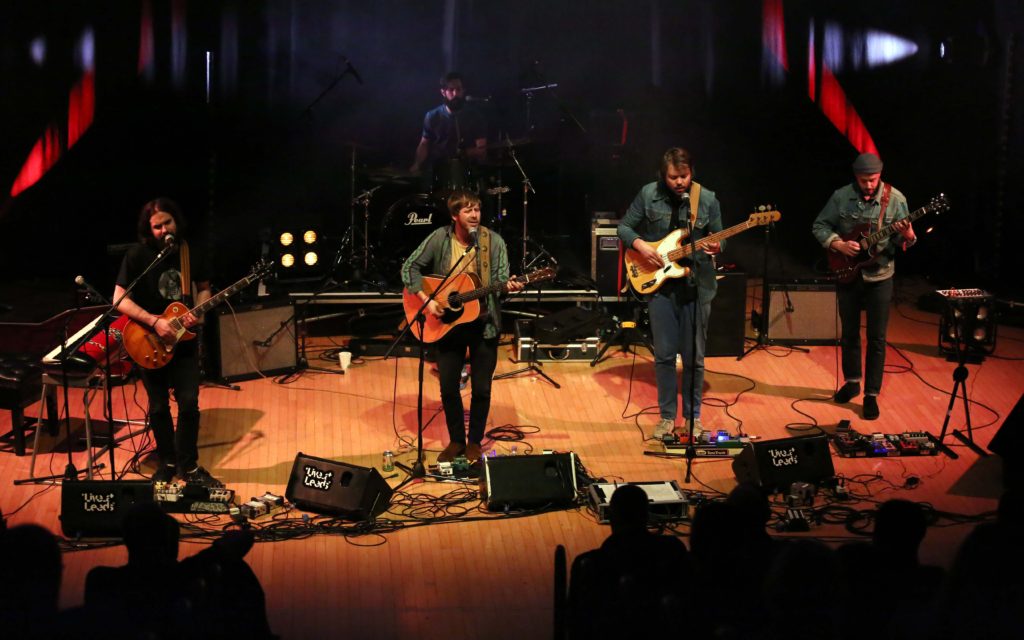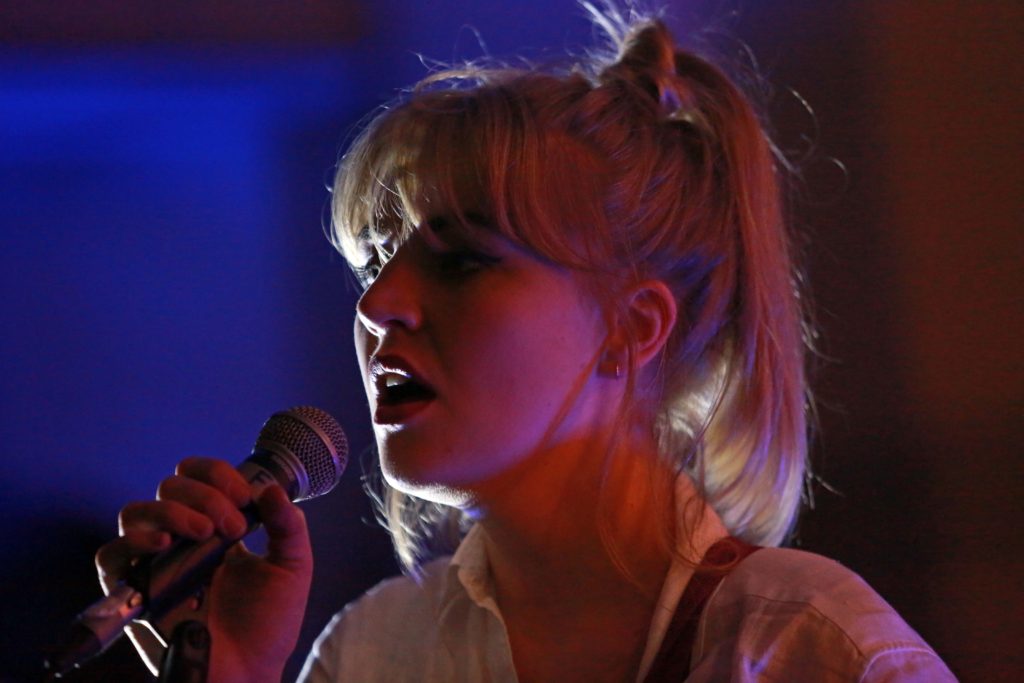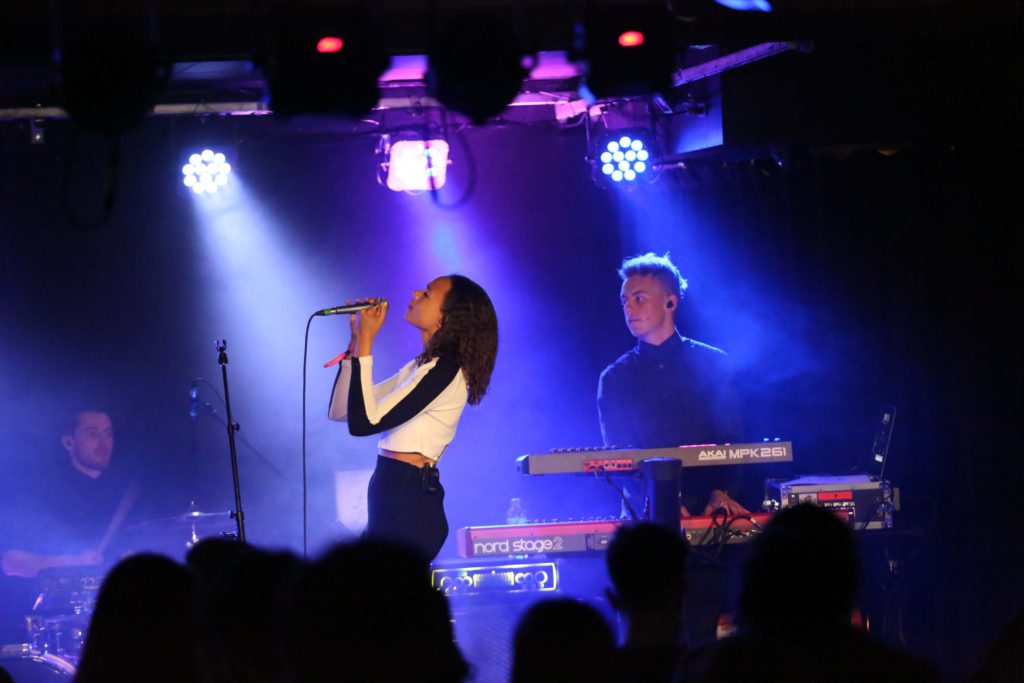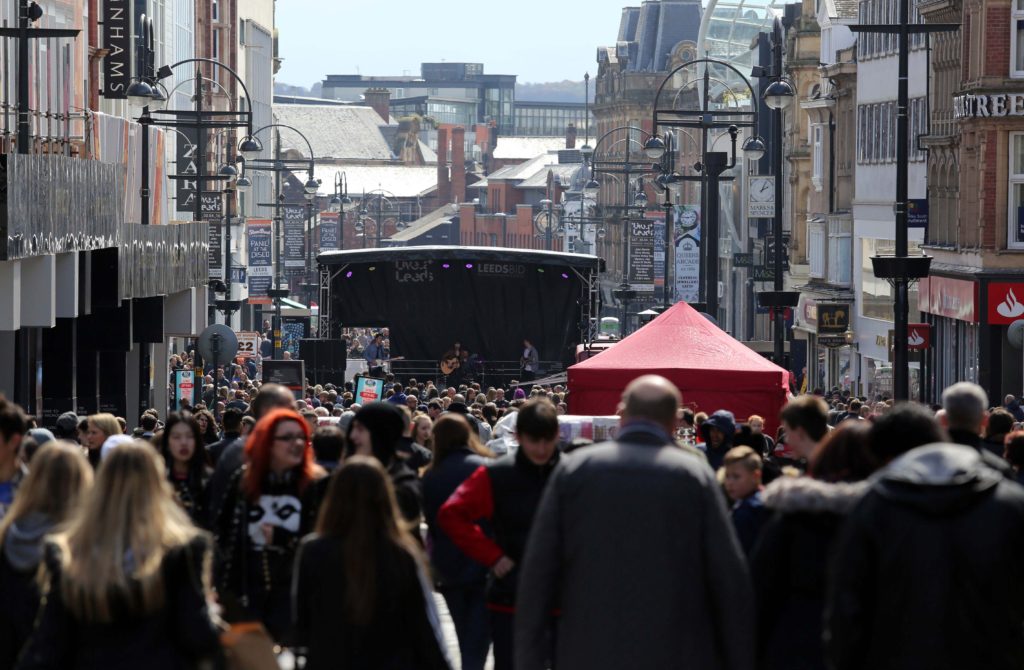For the tenth successive year, Live at Leeds assumed its customary position over the early May Bank Holiday weekend. Regularly seen as the curtain-raiser for the entire UK summer festival season, this award-winning metropolitan festival promises in the course of one very full day more than 200 bands in over 20 venues and spaces across the length and breadth of this great West Yorkshire city.
The concept of the multi-venue, wrist-banded event – one where on entry the paying guest swaps their ticket for a wristband which then entitles them to enter every location where acts are scheduled to play – is often attributed to the Camden Crawl. That particular event may well have bitten the dust two years ago but its legacy lives on up and down the country at the likes of The Great Escape (Brighton), Tramlines (Sheffield), Dot to Dot (Bristol, Nottingham and Manchester) and Long Division (Wakefield). In keeping with the key principles of most of these festivals, Live at Leeds aims to “showcase emerging artists alongside more established acts from around the world”.
There are many possible ways in which to approach such a festival. You can, for example, choose to get yourself into one venue and just stay there for the entire duration from lunchtime right up until closing time that night. This not only reduces the wear on shoe-leather but guarantees you catching those acts that you really want to see; queues from early afternoon outside the still closed doors of The HiFi Club – in anticipation of catching Corinne Bailey Rae later in what would be a most intimate hometown show – illustrated this particular plan of attack. At the other end of this scale is trying to see as many acts as humanly possible, just dashing pell-mell from one place to another. This ensures a wholly expansive, varied experience but is probably best left to the young and most energetic. Somewhere in between the two lies the carefully orchestrated strategy in which you focus on a small nucleus of venues and with often military precision try to outline the day’s schedule accordingly.
We opted for the latter, eschewing the two rooms in the Brudenell Social Club, – and a new venue for this year, the Hyde Park Book Club – all of which lie a couple of miles north by north west of the city centre and, for many, are just too far off the beaten track when time is of the essence. We also decided to forego the bigger locations – the O2 Academy and both Universities – and in so doing quickly kissed goodbye to any opportunity we had of seeing most of the day’s headliners, including Circa Waves, Mystery Jets, Band of Skulls, We Are Scientists and Blossoms.

But even this considered approach still fell foul of the perennial curse of these one-day events, that of many locations being heavily over-subscribed whilst others remain shamefully empty. This point was illustrated quite perfectly by early afternoon. Oporto – a cracking little bar in The Calls area of Leeds city centre, but one with a capacity of less than 200 people – was jam-packed by lunchtime and any chance of seeing the hotly-tipped Holy Esque was only afforded to those who were lucky enough to have got into the place early doors. Even the bigger venues suffered. By mid-afternoon with Mystery Jets due on stage at 4pm, the O2 Academy (with its 2,300 attendance limit) saw a line of people outside stretching all the way down Cookridge Street. It also proved impossible to get into Leeds’ newest live music venue Headrow House to see yet another one-to-watch, the London-based singer/rapper/producer Girli.
In contrast, by early evening you could get right to the very front of the stage at Headrow House to see Jelani Blackman. By the time that this fellow rapper/producer from the country’s capital city appeared there were only a handful of people in the place. A few hundred yards down the Headrow – the main artery that runs west to east through Leeds centre – The Wardrobe and the College of Music were similarly plagued by low numbers at this time of night.
In many respects, Live at Leeds has become a victim of its own success. There are just far too many people wanting to see the same things at the same time. This point was further accentuated by the cancellation on Saturday morning of the event’s principal headliner Jess Glynne. Britain’s latest fully fledged pop star, who had only appeared in Coventry the previous night, pulled out of her top billing slot at the O2 Academy “due to ill health and under doctor’s orders”. Her absence meant that more than two thousand people who would otherwise have been watching her had therefore to squeeze into other venues.
Yet Glynne’s non-appearance also evidenced the strength and durability that Live at Leeds has firmly established in its ten year history. A fortnight ago All Tomorrow’s Parties in Prestatyn was almost completely derailed when that event’s headliner John Cale pulled out. Admittedly there were other contributory factors towards this implosion, but Glynne’s late cancellation seemed to merit barely a mention on social media – the contemporary barometer of every opinion that really counts – and Live at Leeds carried on regardless.

The day was not without other difficulties. Holy Trinity Church – a magnificent Grade I listed building in the very heart of the city – is a beautiful environment in which to experience live music. It lends itself perfectly to the softer end of the sonic spectrum, provided, of course, people don’t talk during the performance. Slow Club – the Sheffield duo of Charles Watson and Rebecca Taylor – closed out proceedings at Holy Trinity Church, but their set was bedevilled by incessant chatter from within some sections of the crowd. It clearly irritated Taylor greatly and impacted adversely upon their show though this was not helped by a decision on their part to take this occasion to showcase a batch of new material. Described by Taylor herself as “more mellow”, the new songs failed to properly engage much of the audience many of whom had headed to the exit before the end.
Some eight hours earlier, her car having broken down en route to the venue and subsequent on stage technical problems meant that the much-anticipated Hannah Lou Clark was confined to playing just three songs. The marvellous ‘We’re Rich’ hinted at the promise she undoubtedly holds.
Yet for all of these logistical issues there was still much to enjoy throughout the day. The refreshing brand of disco-pop for the modern dance from Manchester’s Girlfriend was utterly contagious. New single ‘Tragic On The Dancefloor’ concluded their sparkling set. A few hours later on the self-same Belgrave Music Hall stage, RIVRS were equally enthralling. The London trio and stablemates of Charli XCX ideally fit that Live at Leeds emerging artist profile. They add another dimension to the synth-pop descriptor and their take on Fleetwood Mac’s ‘The Chain’ was absolutely sublime.

Jones had also decided to include a cover in her half hour set. With such a surname – think Tom, George and Norah – it is always going to be tricky to stand out in the world of music, but the young London singer showed through her divine interpretation of the Bee Gees’ classic ‘How Deep Is Your Love’ that she has all the potential to succeed.
Talking of Jones, and is if you were not even remotely aware of this fact, the former frontman of the Welsh band Race Horses has gone solo. Backed by his superb band, Meilyr Jones captivated the Nation of Shopkeeper’s crowd with a set stuffed to the gills with charm, irreverence and invention. Others to be mentioned in the Live at Leeds 2016 dispatches include Treetop Flyers – who walked the cosmic country line between early 70’s Grateful Dead and the Americana of British band Grand Drive – and the Leeds’ outfit Clay, who in Joe Harvey possess a soulful, charismatic singer bearing more than a passing resemblance in both sight and sound to a very young Mick Hucknall.
The addition this year of a fringe event in Briggate – one of the main pedestrianised shopping streets in the city centre – with a free stage promoting local talent and food courtesy of Leeds Indie Food was another piece of inspired programming on the part of the organisers.
Given its logistics and the range of venues at its disposal, there will undoubtedly continue to be certain difficulties in its planning and execution. But Live at Leeds knows its target audience – a predominantly young demographic – with an indie-centric sensibility at its musical core. And having now successfully celebrated its 10th anniversary, Live at Leeds can surely look forward to the next decade with every confidence.
Live at Leeds took place at various venues in the city on Saturday 30th April 2016
Photo credit: Simon Godley
Main image of RIVRS at the Belgrave Music Hall.
More photos from Live at Leeds 2016 can be found HERE





